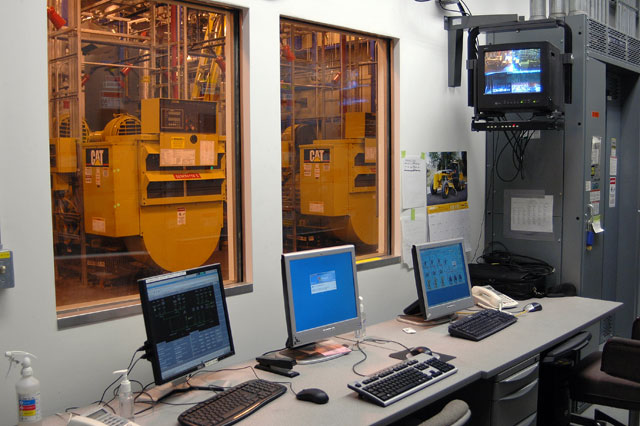Full powerMcMurdo plant upgrade project comes to completionPosted April 29, 2011
Anyone who works in Antarctica knows you never bring just one of anything, whether it’s a battery or a scientific instrument. Success on the Ice is all about redundancy. That’s the mantra of engineers and construction workers who completed a major seven-year project this past austral summer at McMurdo Station “It feels wonderful. It’s been a long time coming. It’s been a pretty intense project. It feels good to be finished, and it did go very well,” said Nathan Hoople, project engineer for the McMurdo Power and Water Plant Upgrade. “[The National Science Foundation The station’s old power plant had been completed in 1982 with equipment based on a design from the 1970s. Two of its half-dozen Caterpillar diesel generators had been out of commission, valuable only as a source of spare parts. “It was well beyond its useable life. The engines were starting to break down,” Hoople said. More importantly, all six of the 800-to-900-kiloWatt (kW) units were located in the same building. A catastrophic fire or other disaster would have knocked out power to the entire station, which houses more than a thousand people from about October to February. About 150 spend the winter months there. Now the station has dual capability. Three new, shiny yellow Caterpillar diesel engines sit in the remodeled generator room. Two more are located in the nearby water plant building. And then there are three reverse osmosis units for producing potable water — two in the water plant and one in the power plant. “We have full redundancy,” Hoople said. “If the power plant were to burn down, the water plant could do everything we need it to do without any more backup.” Four of the Caterpillar engines can produce up to 1500 kW. A smaller unit is rated at 1300 kW. “With the wind system, we run a chunk of the time on one engine,” noted Hoople, referring to a three-turbine wind farm completed during the 2009-10 season by Antarctica New Zealand Each wind turbine can generate up to 330 kW on a site called Crater Hill between McMurdo Station and Scott Base. So far, turbine-generated power has saved the U.S. Antarctic Program (USAP) Integrating the wind farm into the electrical system was a bit tricky — it wasn’t part of the original design — but a bigger challenge to the project was in the first year. The water plant building was found to be sinking, and the entire structure had to be jacked up. “That delayed things right off the bat for the first year and a half,” Hoople said. It was relatively smooth sailing after that, he added. The new power control system networks all five generators with the turbines. It’s smart enough to know when to switch on and off generators based on pre-set commands. If an engine shuts down for any reason, the computer activates another. “Aside from regular maintenance, it will pretty much run without input from anybody until something breaks,” Hoople said. One drawback to the new configuration is that the engines produce less waste heat, which the system used to warm McMurdo Station and save on electricity. However, the new system still captures waste heat off the engine coolant, as well as exhaust heat. “There’s quite a bit of mechanical systems involved to do the waste heat capture; it’s probably as big a portion of this project [as the generators],” said Tim Briggs, construction superintendent for the project since 2007. “This is a very complicated building system for a really relatively small generator plant because of the heat recovery. “The generators are the easy part,” he added. Briggs remembers the old power plant well. He started working in the USAP the year after it was commissioned. Flashing light bulbs and analog dials have given way to computer screens. Engineers in the United States can access and troubleshoot problems thanks to a secure satellite link. “So the people down here aren’t flying by themselves,” Briggs said. “It’s a pretty robust system.” |



For USAP Participants |
For The Public |
For Researchers and EducatorsContact UsU.S. National Science FoundationOffice of Polar Programs Geosciences Directorate 2415 Eisenhower Avenue, Suite W7100 Alexandria, VA 22314 Sign up for the NSF Office of Polar Programs newsletter and events. Feedback Form |





